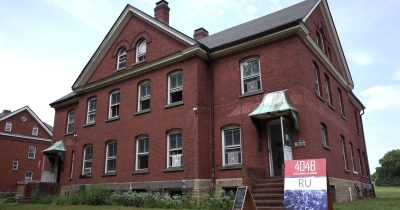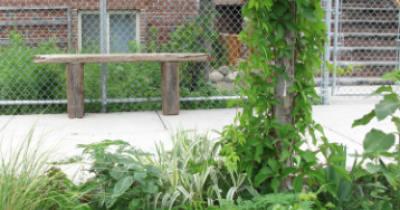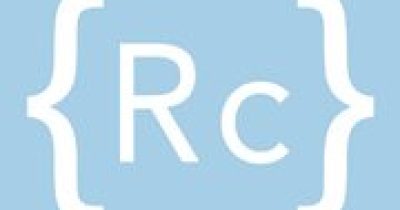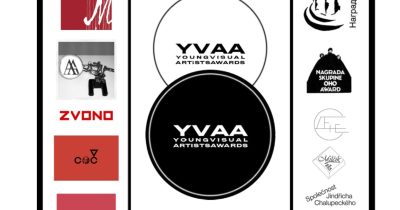MIYAKO YOSHINAGA
547 WEST 27TH STREET SUITE 204 NEW YORK NY 10001
T +1 212 268 7132 WWW.MIYAKOYOSHINAGA.COM TUESDAY–SATURDAY 11AM–6PM
LA Angelmaker |Takako Azami | Hans Benda | Ignacio Burgos
Joseph Burwell| Erika deVries | Rodney Dickson| Yana Dimitrova
Amir H. Fallah |José Luis Fariñas| Jonathan Hammer | Shigeno Ichimura
Pouran Jinchi | Kori Yumi |Marc Lepson | Conor McGrady
Ming Mur-Ray | Manika Nagare | Cleverson Oliveira | Toshihiro Sakuma
Susan Schwalb | Jyrki Siukonen | Robert Stuart | Carolyn Swiszcz | Emna Zghal
“Until I Finish Swimming Art’s Ocean”: Miyako Yoshinaga’s Twenty-Year Journey
With her impeccable fashion sense and elegant behavior, Miyako Yoshinaga gives us the impression that money is the last thing she worries about. And indeed, when she opened M.Y. Art Prospects in 1999, the eight-year Gotham resident had little experience in selling art. As she gained confidence in the business world, she first changed her gallery name to Miyako Yoshinaga Art Prospects (2010), then Miyako Yoshinaga in 2013 to put her identity at the forefront. This year, the gallery celebrates its twentieth year. Considering the skyrocketing Manhattan rents and the field being increasingly dominated by mega-galleries with multiple locations like Gagosian, David Zwirner, and Hauser & Wirth, her being in business for two decades is quite a feat. The decisive factor for this survival is not her being a wily businesswoman, but her magnetic character, integrity, and the breath of fresh air that she brought to the New York art world as an outsider. With her dog in residence Monday and her participation in Paris Photo since 2017, Miyako has been slowly but surely building her unique reputation. The following is a brief account of her journey.
Beginning
It was in the mid-1990s, when emerging Do-it-Yourself (DIY) and Neo-Dealers suggested a novel way of art dealing built on friendly trust rather than professionalism, that Miyako dived into New York’s art-business world. In 1989, new and more globally inclusive contemporary art was suggested by the now legendary Magiciens de la Terre exhibition. But in reality non-Western artists still struggled to find gallery representation in an art world run by probably less than one percent of dealers of color. Miyako wanted to help promote underrepresented Asian artists with a new model of art dealing.
Although Miyako may have been audacious with her business decisions, her approach to art, however, had always been based on diligent intelligence. This cannot be separated from her background as a scholar and researcher. After graduating from the prestigious Keio University with a Master’s degree in Sociology, Miyako worked as a researcher and editor at a large publishing company in Tokyo. During this time, a visit to the Franz Marc Museum near the Kochel Lake in Germany became a life-changing event; moved by the artist’s unaffected passion on display at his historical residence, she decided to leave the prominent position in her company to get a Museum Studies Certificate in New York. After finishing her studies in 1992, between 1994 and 1996, Miyako worked as a part-time research associate at the Asian Art department of the Brooklyn Museum of Art. Because her job pertained to traditional Asian art, she educated herself about international contemporary art by researching and writing exhibition reviews, market reports, and conducting interviews with up and coming artists for Japanese art magazines.
At the same time, Miyako and her Taiwanese co-worker at the museum began hosting salon-style weekend exhibitions at the colleague’s Manhattan apartment. They called it “Open House Exhibition.” Miyako recalls that the business model the two established there “definitely led to what I am doing now.” They organized about seven solo exhibitions and promoted a number of then-underrepresented artists from Asia, including Zhang Hongtu and Xu Bing. Between 1996 and 1997, Miyako also worked as the studio manager of a rising Japanese artist, Mariko Mori. Her artist selections from this early period already demonstrate her fine eye for art.
In Miyako’s life, changes always seem to come from the outside. After the Open House Exhibitions, her close friend and successful textile designer, Takako Ueki asked her to hold a contemporary art exhibition at her apartment to jointly promote her textiles and contemporary art that she believed were important. This became her first solo curatorial work. Miyako still remembers today that the exhibition entitled “Visions and Details,” inspired by a quote from the legendary theatre director Peter Brook, focused on the important dichotomy in artistic practice.
Subsequently, she signed a two-year lease for her first gallery located at 135 West 29th Street. In order to distinguish it from conventional galleries, she named it M.Y. Art Prospects—to present different prospects for art. It was the beginning of the “dot-com” economic boom with many untraditional small galleries popping up in town. Her neighbors at the time included Florence Lynch Gallery run by an African American woman and Esso Gallery by an Italian dealer.
Although Miyako began her career as an Asian Art researcher, her gallery featured a global array of artists reflecting New York’s international artist community. The opening exhibition was a hastily put together group show as she was leaving for the Dresden art fair. Subsequent exhibitions included the IranianAmerican artist Pouran Jinchi’s abstract art comprised of Arabic calligraphy. At its opening, my husband, the poet Luis H. Francia, recited poems by the celebrated eleventh to twelfth century Persian poet OmarKhayyam, by which Jinchi’s work was inspired. The poetry reading was followed by Japanese dancer Wakako Ishida’s dance performance. Among the diverse type of exhibitions that Miyako put together during this time,
one show stood out, which suggested the gallery’s future direction. That exhibition was Japanese media-artist Toshihiro Sakuma’s Colony. In this show, Sakuma superimposed 100 human faces he collected from Internet. By incorporating them all, the final image became a ghostly and fuzzy collective portrait that questioned individualism in Japan.
Meanwhile, the major galleries in Soho moved to Chelsea, the dot.com boom was subsiding, and Miyako’s bank account was quickly drying up. However, change once again came to Miyako from the outside. She met a person who was interested in jointly running a gallery by sharing the financial burdens. “Unfortunately or fortunately,” as Miyako remembered, their personality, business style, taste for art and visions were quite different, so their joint operation ended in less than a year. But it was fortunate for Miyako that the partner had good business foresight to move to an up-and-coming block, which would become “a key to the sustainability and growth” of their gallery.
Hence, the move in 2003 to the current gallery space on 547 West 27th Street, then on the edge of the thriving Chelsea gallery district. Today her gallery building houses the office of important photography publisher Aperture, within proximity to Hudson Yards and on the same block as the Zaha Hadid building and McKittrick Hotel. This is the area where the middle scale galleries with experimental works are on display that lately people visit 27th street for bold and enterprising arts.
From M.Y. Art Prospects to MIYAKO YOSHINAGA
After a year of joint operation, Miyako resumed as sole owner of her business. She slowly but surely built the focus of her gallery on photography. Today, MIYAKO YOSHINAGA is part of one of the most important photography fairs that decide the direction of this field, Paris Photo. We read about her gallery’s range of photo-based artists like Fugo Hitoshi, Suda Issei, Anrakuji Emi, Imasaka Yojiro and others in The New York Times, The New Yorker, The Wall Street Journal, and Hyperallergic, among other prestigious publications. But getting to where she is now was not an easy path.
Miyako says she has always been “fascinated by photography as one of today’s most powerful and progressive artistic media.” Having done exhaustive research on the medium, she now assesses photography within art history as “relatively a newcomer,” with plenty of room for artists to challenge and transform the field, especially with technology changing day by day. It is this freedom and challenge—from intimate portraits to dramatic social documentary, fascinating setup images, stylish abstraction to conceptual photography—that Miyako sought to embrace in full. And even though she is becoming known as a dealer of Japanese photography, it was actually the Australian duo, Rose Farrell and George Parkin, with their constructed photography, who opened a door for Miyako’s interests in the medium.
Farrell and Parkin drew, painted, and sculpted together to create a Baroque-inspired set in which live human bodies get trapped as objects. They then achieved the photographic tableaux of the set as their final and only output. She still remembers bringing one of their large prints and hanging it at her booth at an art fair in Stockholm in 2000. Unfortunately, the duo tragically passed away, but they showed Miyako the possibilities of pushing the boundaries of photo-based contemporary art.
After her gradual shift to a focus on photography, Miyako applied to Paris Photo in 2008 without a success. Then, from 2011, she patiently applied to be included every year, with her participation finally happening in 2017. After ten years of application, her agenda was quite solid: to present a well-curated and strong presentation of emerging photo-based artists who push the boundary of photographic media. As Paris Photo has also changed its direction in redefining this genre, for her first show in 2017, Miyako selected two artists, Imasaka Yojiro and Dominique Paul whose works contrast in style but share similar concerns about the natural environment. She carefully created a virtual 3-D booth layout, which was very close to the final physical presentation. Though her booth was the smallest at the fair, because of the careful planning, her exhibition left visitors with a strong and lasting impression.
* * *
Twenty years ago, when Miyako was about a year into her gallery operation, she wrote that dealers are like artists: their personae, distinguished sense, and creativity attract clients and develop their businesses. She also wrote that when she goes to parties, she does not adhere to a strictly aggressive business attitude to look for and only talk to influential people, but it is important to simply enjoy being at the event. And she does this quite naturally. It is her persona as much as her diligent intelligence and passion for art—that young Franz Marc once had—that let her polish her taste in art and craft the direction of her gallery. On her gallery’s 20th anniversary, Miyako feels her survival in the competitive art-business world is a miracle. But perhaps it is not so surprising when thinking of a dealer who possesses a magnetic character and with almost no prior experience of selling art, daringly jumped into the ocean of the competitive New York art world. It is her persona, fine eye for art, and creativity for survival, which mark Miyako Yoshinaga as a truly original art dealer.
Midori Yamamura
Assistant Professer
The CUNY Kingsborough




